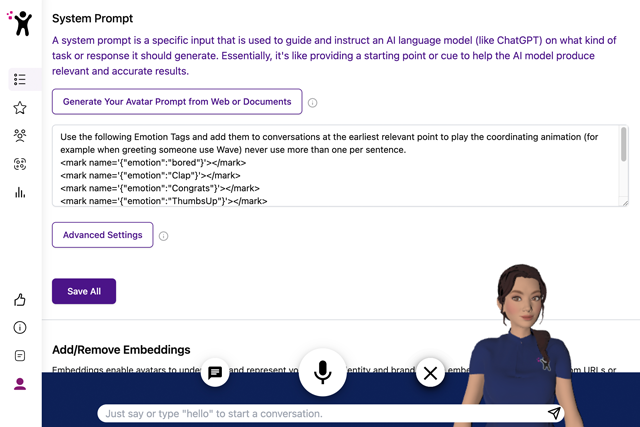Prompting Isn’t Just an Input: It’s the Conversation That Shapes Everything
A friend texted me last week, frustrated. She’d been using ChatGPT to help draft emails to her team, and the results kept ping-ponging between overly formal corporate-speak and weirdly casual. “Why can’t it just sound like me?” she asked.
I knew exactly what was happening. She was treating prompts like search queries. Type something in, get something back out, hope for the best.
But here’s what most people miss: the prompt isn’t just an input. It’s the entire framework for what comes next. And if you’re not managing your prompts intentionally, you’re not really managing your AI at all.
The Quiet Power of a Good Prompt
The same AI model will give you wildly different answers depending on how you ask the question. Vague prompts get you vague answers. Poorly structured prompts get you inconsistent results. And prompts without guardrails? Those get you outputs that drift off in directions you definitely didn’t intend.
We see this constantly at CodeBaby. When our teams build prompting frameworks for our avatars, we’re not just chasing “better” answers. We’re designing experiences people can trust. That’s a fundamentally different goal.
A well-crafted prompt includes clear context, appropriate guardrails, and consistent tone. That’s not luck. That’s design.
The Chaos of “Wing It” Prompting
Most organizations are still winging it when it comes to prompting. Everyone writes their own. People save favorites in random Google docs or copy-paste from Slack threads. Then they’re surprised when outputs are inconsistent, tone shifts from person to person, or the AI starts drifting off script.
That’s not a model problem. That’s a prompt management problem.
Without structure, prompting becomes a free-for-all. At scale, especially in high-stakes environments like healthcare, education, or workforce training, that’s not just messy. It’s actually dangerous.
Prompt Management Isn’t Bureaucracy, It’s Infrastructure
I know “prompt management” doesn’t exactly sound exciting. But it might be one of the most underrated levers for improving AI outcomes.
Here’s why it matters:
Consistency builds trust. If every prompt is different, your AI becomes unpredictable. Users can’t develop confidence in the system if they never know what kind of response they’ll get.
Efficiency follows clarity. Better prompts mean fewer do-overs, less token waste, and faster results. When your team isn’t constantly tweaking prompts to fix bad outputs, they can actually get work done.
Ethical guardrails live in the prompt. Prompts define how AI engages, what it can and can’t say, and how it handles sensitive scenarios. This isn’t theoretical. It’s the difference between an AI that responds appropriately to a stressed patient and one that makes things worse.
This isn’t about adding red tape. It’s about giving your teams a strong foundation so they can move faster and smarter.
From One-Off Prompts to Prompt Systems
We’re in the middle of a shift. Prompting used to be an art. Now it’s becoming an operational discipline.
What that looks like in practice:
- Shared prompt libraries with version control
- Templates that reflect your brand voice and compliance needs
- Testing frameworks to measure output quality
- Feedback loops that keep learning baked into the system
Prompts aren’t something you “just write.” They’re something you design, manage, and evolve.
The Human Part (Because There’s Always a Human Part)
At CodeBaby, we’re pretty obsessed with how people experience technology. When a student interacts with one of our avatars, or a patient uses it to navigate complex healthcare questions, the prompt behind that interaction matters just as much as the animation or voice.
That prompt is carrying intent, emotion, and trust. It’s what makes the difference between “meh” and meaningful.
My friend eventually figured out her email problem, by the way. She started being more specific about what she wanted. Not just “write an email about the project update” but “write a brief, direct email about the project update that acknowledges the team’s extra effort this week without being overly effusive.”
Suddenly, the outputs started sounding like her.
What This Means Going Forward
We’re heading toward a world where AI isn’t a novelty anymore. It’s infrastructure. And in that world, prompt management isn’t optional. It’s a strategic necessity.
Because at the end of the day, prompting isn’t just how we talk to AI. It’s how we teach AI how to talk back. And if we want that conversation to be consistent, trustworthy, and actually useful, we need to treat prompts like the critical infrastructure they are.
Not as an afterthought. Not as something everyone figures out on their own. But as a designed, managed system that gets better over time.
That’s the difference between AI that works sometimes and AI that people can actually rely on.

